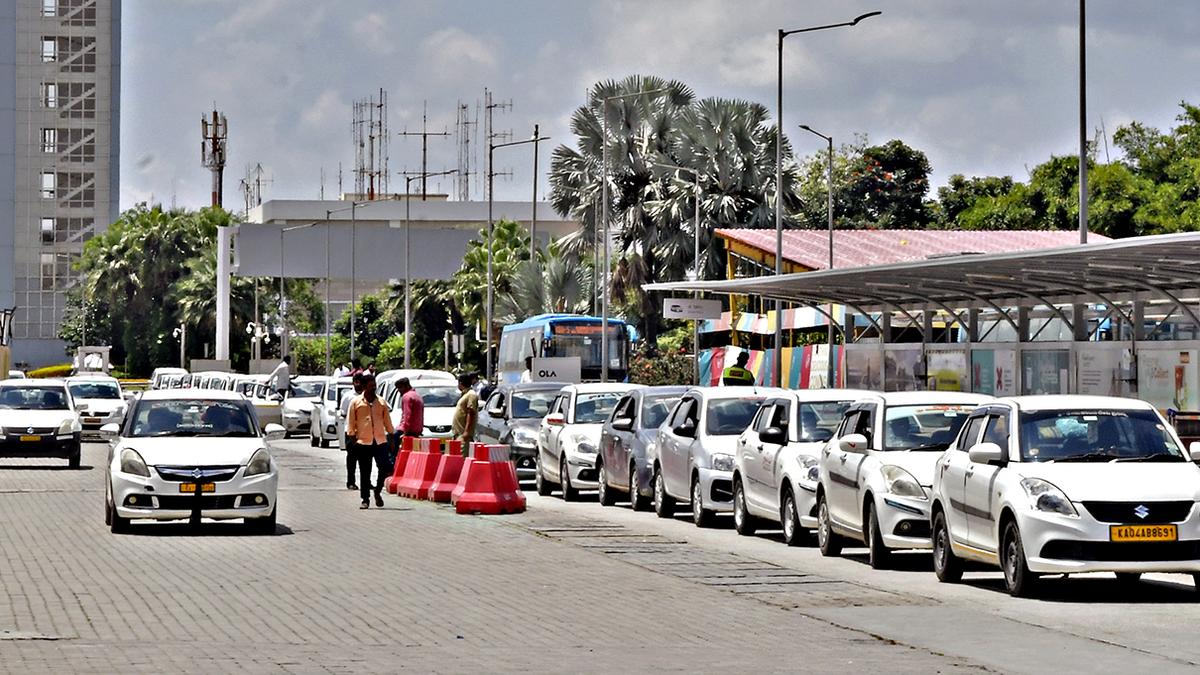
With the fleet shrinking, commuters complain that getting a cab in Bengaluru feels impossible
The Hindu
The pandemic-induced downturn marked a turning point for cab drivers in Bengaluru. According to Tanveer Pasha, president, Ola and Uber Drivers’ Association, the number of active cabs in the city has dropped from over 1 lakh before the pandemic to just around 30,000 today.
“I rely on cabs to commute nearly 30 km to my office every day, but booking one has become increasingly challenging, especially during peak hours or when it rains,” said Shruthi N., a marketing executive from Marathahalli in Bengaluru. “Even on the rare occasions when I manage to book a cab, the challenges don’t end there. Drivers frequently cancel the ride without explanation, leaving me scrambling for alternatives. If they do accept, the fares are often exorbitantly high, especially during peak hours or bad weather. It’s incredibly frustrating to deal with such unpredictability on a daily basis.”
Shruthi’s struggle mirrors the plight of many Bengalureans as the city faces an acute shortage of cabs on aggregator platforms. This is largely attributed to a mass exodus of drivers from the sector, driven by unsustainable earnings and mounting financial pressures.
The pandemic-induced downturn marked a turning point for cab drivers in Bengaluru. According to Tanveer Pasha, president, Ola and Uber Drivers’ Association, the number of active cabs in the city has dropped from over 1 lakh before the pandemic to just around 30,000 today.
“Nearly 60% of cab drivers have not returned to Bengaluru since the Covid pandemic and subsequent lockdowns. The profession has become unsustainable for many due to skyrocketing fuel prices, steep commissions demanded by aggregator platforms, and the ever-increasing cost of living in the city. For many drivers, these financial pressures have made continuing in the cab industry unviable,” Mr Pasha explained.
He also highlighted the burden of aggregator commissions, which stand at a staggering 30% of drivers’ earnings, including GST. “Drivers are struggling to manage the rising costs of car maintenance, EMI payments, and taxes. Many have been forced to sell their vehicles and return to their hometowns, taking up agriculture, labour work, or other jobs to make ends meet. The real culprits are the aggregator platforms. They exploit drivers with high commissions and give little in return,” he said.
Radhakrishna Holla, president of the Karnataka State Travel Operators’ Association, pointed out that many drivers are now opting for more stable employment. Companies operating electric vehicle (EV) fleets are hiring drivers on salaries ranging from ₹40,000 to ₹50,000, including incentives.
“Given the high maintenance costs and surging fuel prices, many drivers have chosen to work as full-time employees for companies operating electric vehicle fleets. These companies offer good salaries, including incentives, which is far more stable and profitable compared to owning and maintaining their own vehicles. Drivers no longer have to bear the financial burden of servicing charges, EMIs, and taxes, making this shift an attractive alternative,” Mr Holla added.

Adani Krishnapatnam Port handles 5.85 MMT of cargo in June, sets record for second consecutive month
Adani Krishnapatnam Port achieves record-breaking cargo volume, cements position as leading logistics hub on India's eastern coast.

 Run 3 Space | Play Space Running Game
Run 3 Space | Play Space Running Game Traffic Jam 3D | Online Racing Game
Traffic Jam 3D | Online Racing Game Duck Hunt | Play Old Classic Game
Duck Hunt | Play Old Classic Game










